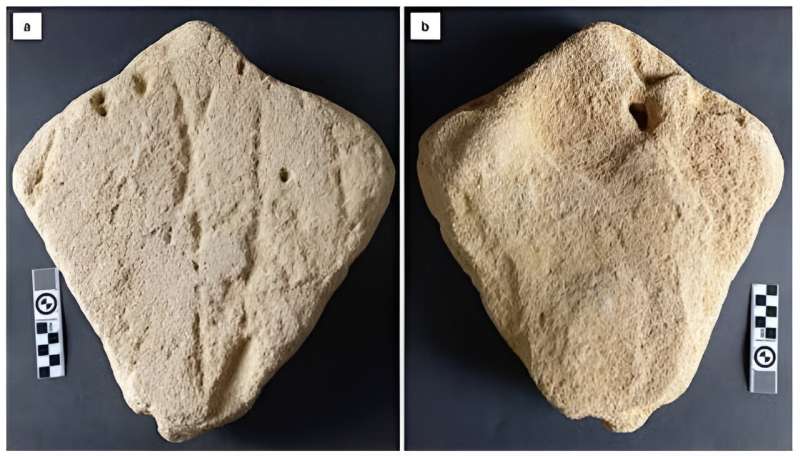- Joined
- Aug 7, 2001
- Messages
- 54,631
For starters...
Ice Age ivory 'charm' thought to be oldest intact mammoth carving
By Tony Paterson in Berlin
Published: 27 June 2007
Archaeologists have found what is believed to be the world's oldest fully intact ivory carving of a mammoth from an Ice Age site in Germany that was inhabited by the first Homo sapiens 35,000 years ago.
The tiny carving, which is only 3.7cms long, has a pointed tail, an arched trunk and powerful legs that join together at the bottom, enabling it to be hung from the neck and worn as what was almost certainly a charm. The mammoth is among a group of Ice Age figurines retrieved by the American archaeologist Nicholas Conard and his colleagues from Tübingen University in Germany. They were found in the Vogelherd cave in the south-western state of Baden-Wüerttemberg last year.
However, the discovery was only made public this month, when Mr Conard and his colleagues, Michael Lingnau and Maria Malina, reported it in a German archaeology journal.
"Our discovery shows that there has been art in this region for over 35,000 years," Mr Conard said. "The excitement and thrill at finding them was immense, they are among the oldest and most impressive examples of figurative artworks from the Ice Age." The Vogelherd cave was first excavated in 1931 by the Tübingen archaeologist Gusatav Reik, who found an initial series of primitive artefacts. In the years that followed, the carved ivory remains of wild horses, mammoths, lions and reindeer were discovered.
However, as ivory splits with age, the remains were fragmented. Mr Conard and the Tübingen team's mammoth is believed to be the only surviving Ice Age ivory carving of the animal to have been found intact.
Mr Conard and his team returned to the Vogelherd cave in 2005 and began extensive excavation work, during which 10,000 16-litre plastic bags of bones, mud, stones, loose earth and other material were removed from the site and meticulously examined.
Their discovery includes a tiny, yet well preserved lion with an outstretched neck that bears around thirty finely-etched crosses running the length of its back. The remains of other mammoths and two as yet unidentified ivory carvings were also found during the excavation.
Carbon dating suggest that the figurines belong to the Aurignacian culture, which refers to an area of southern France where important Ice Age finds have been made and which has already been linked to the arrival of the first Homo sapiens in Europe.
The Vogelherd excavation is scheduled to continue until next year. The mammoth and other figurines will be shown in 2009 at an exhibition in Stuttgart, entitled Cultures and Art of the Ice Age.
http://news.independent.co.uk/europe/article2714179.ece
Ice Age ivory 'charm' thought to be oldest intact mammoth carving
By Tony Paterson in Berlin
Published: 27 June 2007
Archaeologists have found what is believed to be the world's oldest fully intact ivory carving of a mammoth from an Ice Age site in Germany that was inhabited by the first Homo sapiens 35,000 years ago.
The tiny carving, which is only 3.7cms long, has a pointed tail, an arched trunk and powerful legs that join together at the bottom, enabling it to be hung from the neck and worn as what was almost certainly a charm. The mammoth is among a group of Ice Age figurines retrieved by the American archaeologist Nicholas Conard and his colleagues from Tübingen University in Germany. They were found in the Vogelherd cave in the south-western state of Baden-Wüerttemberg last year.
However, the discovery was only made public this month, when Mr Conard and his colleagues, Michael Lingnau and Maria Malina, reported it in a German archaeology journal.
"Our discovery shows that there has been art in this region for over 35,000 years," Mr Conard said. "The excitement and thrill at finding them was immense, they are among the oldest and most impressive examples of figurative artworks from the Ice Age." The Vogelherd cave was first excavated in 1931 by the Tübingen archaeologist Gusatav Reik, who found an initial series of primitive artefacts. In the years that followed, the carved ivory remains of wild horses, mammoths, lions and reindeer were discovered.
However, as ivory splits with age, the remains were fragmented. Mr Conard and the Tübingen team's mammoth is believed to be the only surviving Ice Age ivory carving of the animal to have been found intact.
Mr Conard and his team returned to the Vogelherd cave in 2005 and began extensive excavation work, during which 10,000 16-litre plastic bags of bones, mud, stones, loose earth and other material were removed from the site and meticulously examined.
Their discovery includes a tiny, yet well preserved lion with an outstretched neck that bears around thirty finely-etched crosses running the length of its back. The remains of other mammoths and two as yet unidentified ivory carvings were also found during the excavation.
Carbon dating suggest that the figurines belong to the Aurignacian culture, which refers to an area of southern France where important Ice Age finds have been made and which has already been linked to the arrival of the first Homo sapiens in Europe.
The Vogelherd excavation is scheduled to continue until next year. The mammoth and other figurines will be shown in 2009 at an exhibition in Stuttgart, entitled Cultures and Art of the Ice Age.
http://news.independent.co.uk/europe/article2714179.ece






